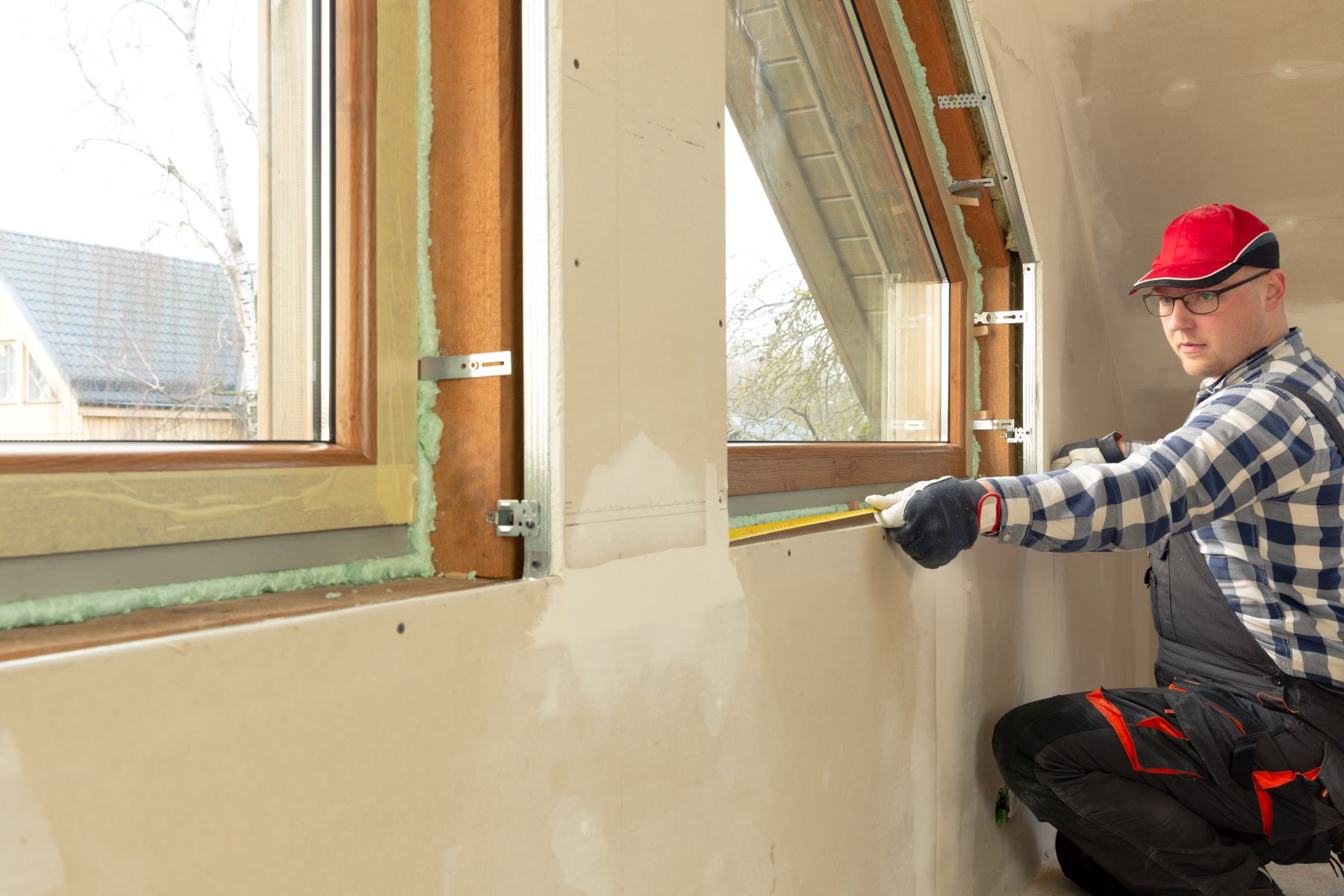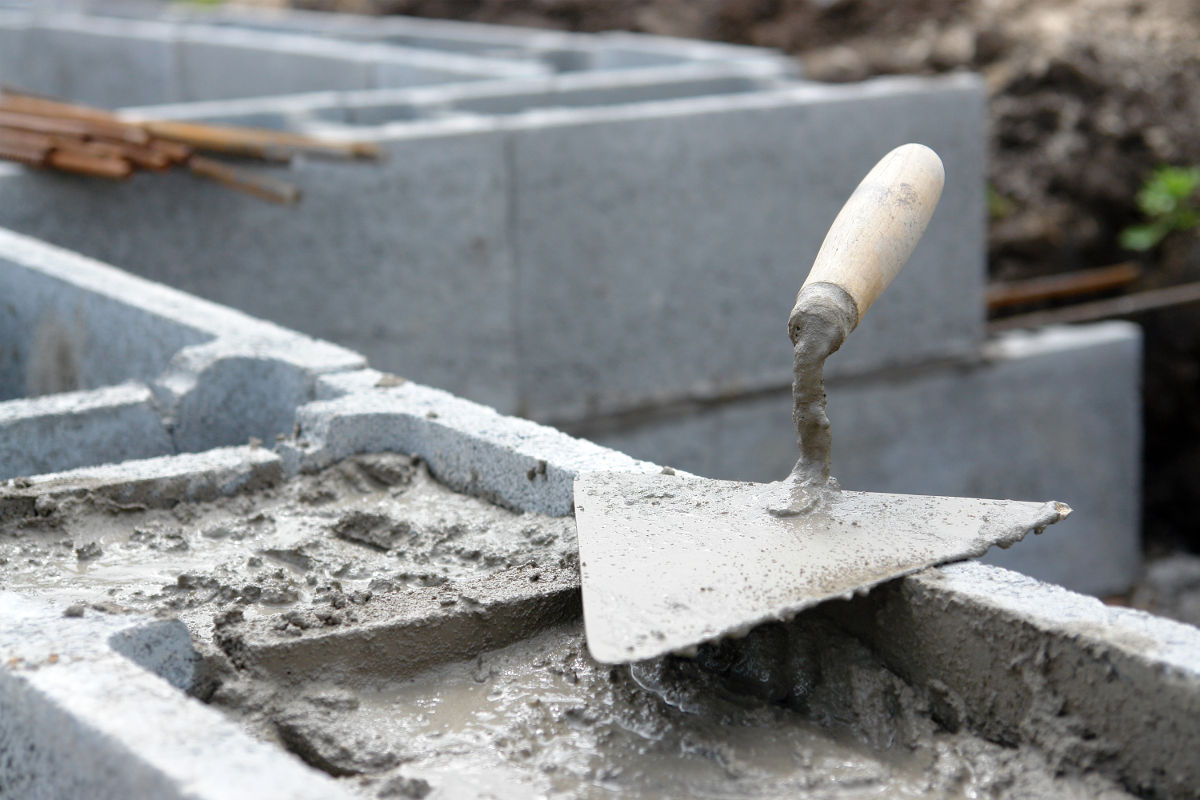Home>Renovation & DIY>Home Renovation Guides>How Does Qualifying For Community Block Grants Work For Home Improvements


Home Renovation Guides
How Does Qualifying For Community Block Grants Work For Home Improvements
Modified: January 4, 2024
Learn how to qualify for community block grants for home renovations and improvements. Get expert tips and guides for successful home renovation projects.
(Many of the links in this article redirect to a specific reviewed product. Your purchase of these products through affiliate links helps to generate commission for Storables.com, at no extra cost. Learn more)
Introduction
Welcome to the world of home improvements! Whether you’re a seasoned homeowner or a first-time buyer, making your living space more comfortable and functional is always a top priority. However, the costs associated with home renovations can often be daunting. This is where Community Block Grants come into play, offering a valuable resource for individuals and families looking to enhance their homes.
In this comprehensive guide, we’ll delve into the intricacies of Community Block Grants, exploring how they work, who is eligible to receive them, and how they can be utilized for home improvements. By the end of this article, you’ll have a clear understanding of how these grants can help you transform your living space into the home of your dreams. So, let’s roll up our sleeves and embark on this enlightening journey into the realm of Community Block Grants for home improvements!
Key Takeaways:
- Community Block Grants provide funding for home improvements to make living spaces safer and more accessible, benefiting low- and moderate-income families and communities in need.
- To access Community Block Grants for home improvements, individuals and organizations must meet specific eligibility criteria, navigate the application process, and ensure that their proposed projects align with the program’s objectives.
Read more: How Do You Qualify For Insulation Grant
Understanding Community Block Grants
Community Block Grants (CBG) are a vital component of the U.S. Department of Housing and Urban Development’s (HUD) community development program. These grants are designed to assist low- and moderate-income families and individuals, as well as communities with a high need for economic development, in achieving various goals, including affordable housing, job creation, and infrastructure improvements.
The primary objective of CBG is to empower local governments and community organizations to address a wide range of community development needs. These grants offer flexible funding that can be tailored to suit the unique requirements of each community, making them an invaluable resource for initiating positive change at the grassroots level.
CBG funds are allocated to states and local jurisdictions based on a formula that takes into account factors such as population, poverty levels, and housing overcrowding. Once distributed, these funds can be utilized for a diverse array of projects, including housing rehabilitation, public facility construction, economic development initiatives, and public service programs.
It’s important to note that CBG funds are subject to stringent regulations to ensure that they are used in a manner that aligns with the program’s objectives. Transparency and accountability are key principles governing the allocation and utilization of these funds, with rigorous reporting and monitoring mechanisms in place to safeguard against misuse.
By understanding the fundamental purpose and mechanisms of Community Block Grants, individuals and communities can harness the potential of these resources to drive positive change and enhance the quality of life for residents. Now that we have a foundational understanding of CBG, let’s explore the eligibility criteria for accessing these grants.
Eligibility for Community Block Grants
Community Block Grants are intended to benefit individuals and communities facing economic challenges, and as such, there are specific eligibility criteria that must be met in order to qualify for these grants. While the exact requirements may vary slightly depending on the specific program and jurisdiction, there are some overarching principles that generally apply.
First and foremost, eligible recipients of Community Block Grants typically include local governments, including cities and counties, as well as state governments. These entities play a pivotal role in identifying and addressing the most pressing community development needs within their jurisdictions and are thus entrusted with the responsibility of administering CBG funds effectively.
Furthermore, in order to ensure that the funds are directed towards those who are most in need, CBG programs often prioritize projects and initiatives that benefit low- and moderate-income individuals and families. This emphasis on serving economically disadvantaged communities underscores the commitment to fostering inclusive and equitable development.
Non-profit organizations and community development corporations also frequently qualify as eligible recipients of Community Block Grants. These entities are deeply entrenched in the communities they serve and are instrumental in spearheading initiatives that promote affordable housing, economic empowerment, and social welfare.
Individuals seeking to access CBG funds for personal use, such as for home improvements, may find that the eligibility criteria are more stringent. In many cases, direct financial assistance to individuals is not a primary focus of CBG programs, and the grants are typically channeled through local government or non-profit organizations to support broader community development objectives.
It’s important to consult with the relevant local government or designated administrators of CBG funds to ascertain the specific eligibility requirements and application procedures. By understanding and meeting the eligibility criteria, individuals and organizations can position themselves to leverage the potential of Community Block Grants for the betterment of their communities.
When applying for community block grants for home improvements, make sure to meet the eligibility criteria and provide all required documentation to support your application. Be thorough and accurate in your application to increase your chances of approval.
Applying for Community Block Grants
Securing Community Block Grants for community development projects, including home improvements, involves a structured application process that requires careful planning and adherence to specific guidelines. Whether you are a local government entity, a non-profit organization, or an individual seeking support for community-oriented initiatives, understanding the steps involved in applying for CBG funds is essential.
The first step in the application process is to identify the relevant administering agency or department responsible for overseeing Community Block Grants within your jurisdiction. This may be a local housing authority, a community development agency, or a designated department within the municipal or state government.
Once you have identified the administering entity, it is crucial to familiarize yourself with the specific funding priorities, application deadlines, and eligibility requirements outlined in the CBG program guidelines. These guidelines serve as a roadmap for prospective applicants, offering insights into the types of projects and activities that are eligible for funding and the criteria against which applications will be evaluated.
Preparing a comprehensive and compelling grant proposal is a critical aspect of the application process. The proposal should clearly articulate the objectives of the project, the anticipated outcomes, the target beneficiaries, and the budgetary requirements. Emphasizing the alignment of the proposed project with the overarching goals of the CBG program, such as fostering affordable housing or revitalizing distressed neighborhoods, can significantly strengthen the proposal’s merit.
Furthermore, applicants are typically required to demonstrate community engagement and support for the proposed project. This may involve obtaining letters of support from relevant stakeholders, conducting public outreach efforts to garner input and feedback, and showcasing the project’s potential to address pressing community needs.
It’s important to adhere to the prescribed application submission procedures and deadlines to ensure that your proposal receives due consideration. Many CBG programs have competitive application processes, and meticulous attention to detail can enhance the likelihood of securing funding for your project.
By navigating the application process with diligence and strategic planning, individuals and organizations can position themselves to access Community Block Grants and leverage these resources to effect positive change within their communities, including undertaking transformative home improvement initiatives.
Using Community Block Grants for Home Improvements
Community Block Grants offer a valuable avenue for homeowners and communities to undertake essential home improvement projects that contribute to the overall well-being and livability of residential properties. Whether it’s addressing critical safety concerns, enhancing energy efficiency, or improving accessibility, CBG funds can be instrumental in supporting a wide array of home improvement endeavors.
One of the key considerations when utilizing Community Block Grants for home improvements is to ensure that the proposed projects align with the objectives of the CBG program. This may involve demonstrating how the improvements contribute to the creation or preservation of affordable housing, promote neighborhood revitalization, or address the needs of low- and moderate-income households.
Common home improvement projects that may be eligible for CBG funding include repairs to address health and safety hazards, such as fixing structural deficiencies, remedying electrical or plumbing issues, or mitigating lead-based paint hazards. Additionally, initiatives aimed at increasing energy efficiency, such as installing insulation, upgrading heating and cooling systems, or implementing renewable energy solutions, may also be supported through CBG funds.
Accessibility modifications to accommodate individuals with disabilities, such as installing ramps, widening doorways, or adapting bathrooms and kitchens, are another category of home improvements that can be facilitated by Community Block Grants. These enhancements contribute to fostering inclusive and supportive living environments for residents with diverse needs.
It’s important to note that while CBG funds can be utilized for a range of home improvement projects, there are typically regulations and guidelines governing the use of these funds, including procurement standards, prevailing wage requirements, and compliance with environmental and historic preservation considerations. Adhering to these guidelines is essential to ensure that the funds are utilized effectively and in accordance with program requirements.
For homeowners seeking to leverage CBG funds for home improvements, engaging with local government housing departments, community development organizations, or designated agencies responsible for administering CBG funds is a crucial first step. These entities can provide guidance on the application process, eligible projects, and the necessary compliance measures to successfully execute home improvement initiatives with CBG support.
By harnessing the potential of Community Block Grants, homeowners and communities can embark on transformative home improvement projects that enhance the safety, sustainability, and accessibility of residential properties, ultimately contributing to the overall vibrancy and resilience of neighborhoods.
Conclusion
Community Block Grants represent a beacon of hope for individuals and communities striving to enhance their living environments through meaningful home improvements. By understanding the intricacies of CBG programs, including their underlying principles, eligibility criteria, application processes, and the scope of eligible projects, homeowners and community stakeholders can unlock a wealth of opportunities to elevate the quality of residential properties and foster inclusive, thriving neighborhoods.
These grants, rooted in the mission of promoting affordable housing, economic empowerment, and community development, serve as a catalyst for positive change at the grassroots level. Whether it’s addressing critical safety concerns, bolstering energy efficiency, or facilitating accessibility modifications, CBG funds offer a lifeline for homeowners seeking to undertake transformative home improvement projects that resonate with the broader objectives of the program.
Furthermore, the collaborative nature of CBG programs, which involves partnerships between local governments, non-profit organizations, and community stakeholders, underscores the collective commitment to driving sustainable development and uplifting underserved communities. By leveraging CBG funds, individuals and organizations can amplify their impact and contribute to the creation of safe, healthy, and inclusive residential environments.
As we navigate the landscape of home improvements and community development, it’s essential to recognize the pivotal role that Community Block Grants play in fostering resilience, equity, and opportunity. By embracing the potential of these grants and navigating the application process with diligence and strategic vision, homeowners and community advocates can embark on a journey towards revitalizing neighborhoods and creating homes that embody safety, sustainability, and inclusivity.
In closing, Community Block Grants stand as a testament to the transformative power of community-driven initiatives, offering a pathway for individuals and communities to realize their aspirations for vibrant, thriving living spaces. By harnessing the resources and collaborative spirit embodied in CBG programs, we can pave the way for a future where every home is a sanctuary of comfort, security, and opportunity.
Frequently Asked Questions about How Does Qualifying For Community Block Grants Work For Home Improvements
Was this page helpful?
At Storables.com, we guarantee accurate and reliable information. Our content, validated by Expert Board Contributors, is crafted following stringent Editorial Policies. We're committed to providing you with well-researched, expert-backed insights for all your informational needs.















0 thoughts on “How Does Qualifying For Community Block Grants Work For Home Improvements”